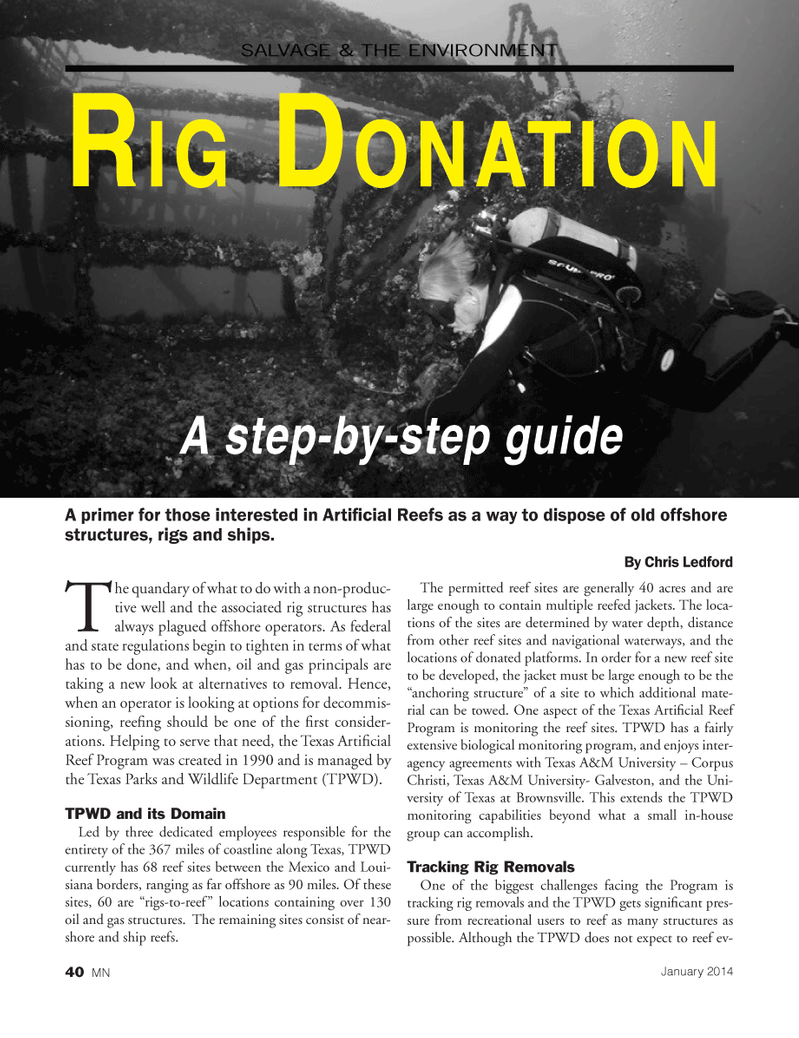
Page 40: of Marine News Magazine (January 2014)
Tug Boat Technology
Read this page in Pdf, Flash or Html5 edition of January 2014 Marine News Magazine
RIG DONATIONIG DONATION
A step-by-step guide
SALVAGE & THE ENVIRONMENT
T he quandary of what to do with a non-produc- tive well and the associated rig structures has always plagued offshore operators. As federal and state regulations begin to tighten in terms of what has to be done, and when, oil and gas principals are taking a new look at alternatives to removal. Hence, when an operator is looking at options for decommis- sioning, reefi ng should be one of the fi rst consider- ations. Helping to serve that need, the Texas Artifi cial
Reef Program was created in 1990 and is managed by the Texas Parks and Wildlife Department (TPWD).
TPWD and its Domain
Led by three dedicated employees responsible for the entirety of the 367 miles of coastline along Texas, TPWD currently has 68 reef sites between the Mexico and Loui- siana borders, ranging as far offshore as 90 miles. Of these sites, 60 are “rigs-to-reef” locations containing over 130 oil and gas structures. The remaining sites consist of near- shore and ship reefs.
The permitted reef sites are generally 40 acres and are large enough to contain multiple reefed jackets. The loca- tions of the sites are determined by water depth, distance from other reef sites and navigational waterways, and the locations of donated platforms. In order for a new reef site to be developed, the jacket must be large enough to be the “anchoring structure” of a site to which additional mate- rial can be towed. One aspect of the Texas Artifi cial Reef
Program is monitoring the reef sites. TPWD has a fairly extensive biological monitoring program, and enjoys inter- agency agreements with Texas A&M University – Corpus
Christi, Texas A&M University- Galveston, and the Uni- versity of Texas at Brownsville. This extends the TPWD monitoring capabilities beyond what a small in-house group can accomplish.
Tracking Rig Removals
One of the biggest challenges facing the Program is tracking rig removals and the TPWD gets signifi cant pres- sure from recreational users to reef as many structures as possible. Although the TPWD does not expect to reef ev-
A primer for those interested in Artifi cial Reefs as a way to dispose of old offshore structures, rigs and ships.
By Chris Ledford
January 2014 40 MN
MN JAN14 Layout 32-49.indd 40 12/20/2013 10:17:46 AM

 39
39

 41
41
